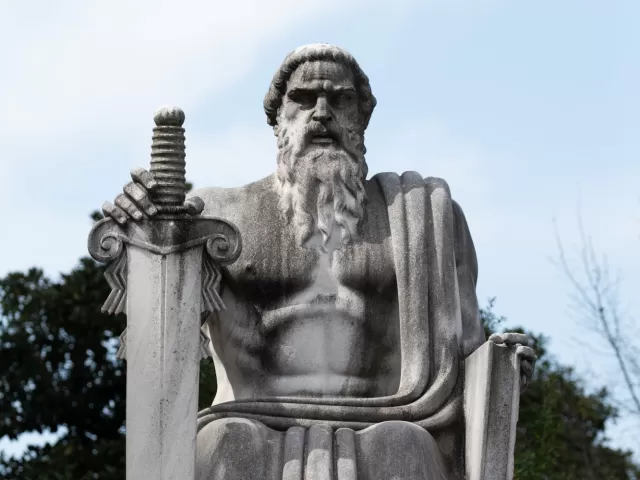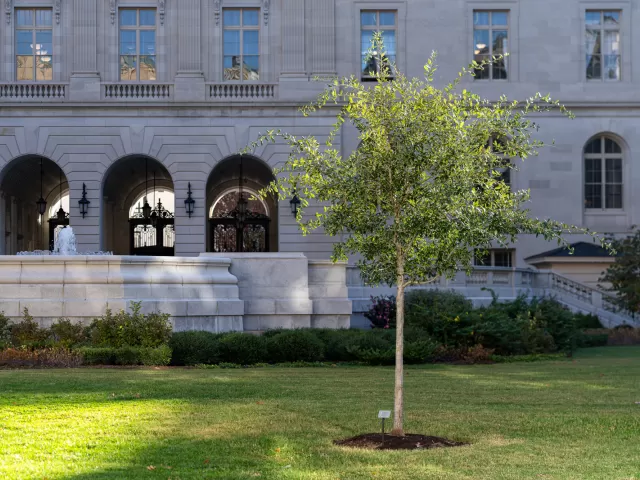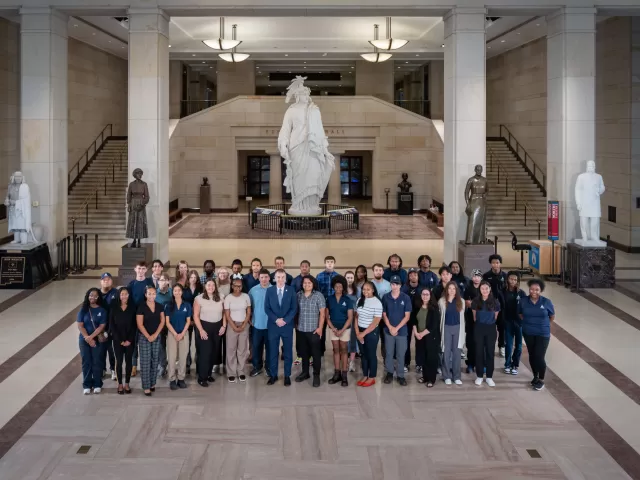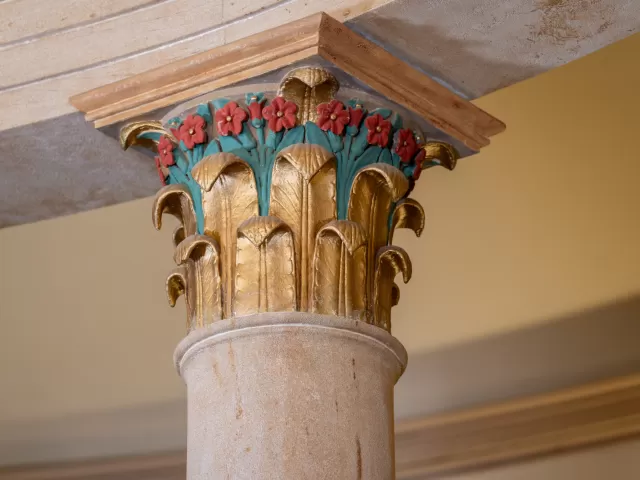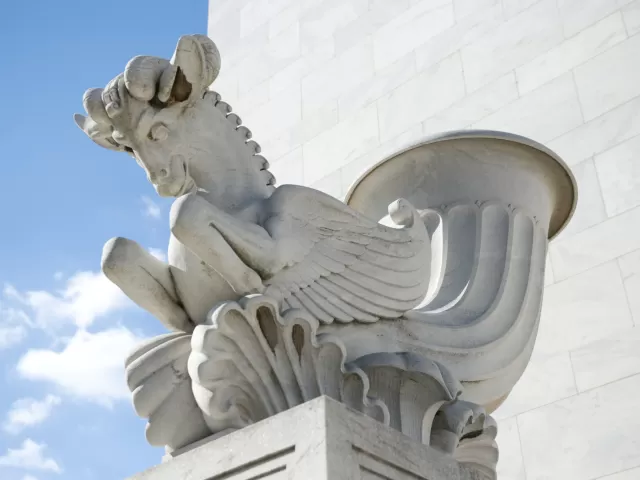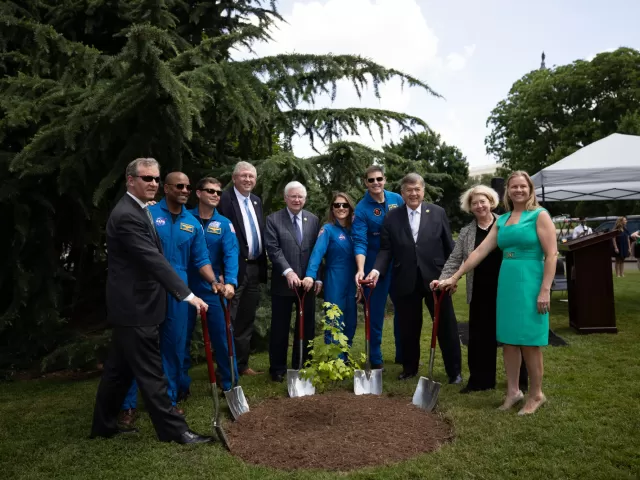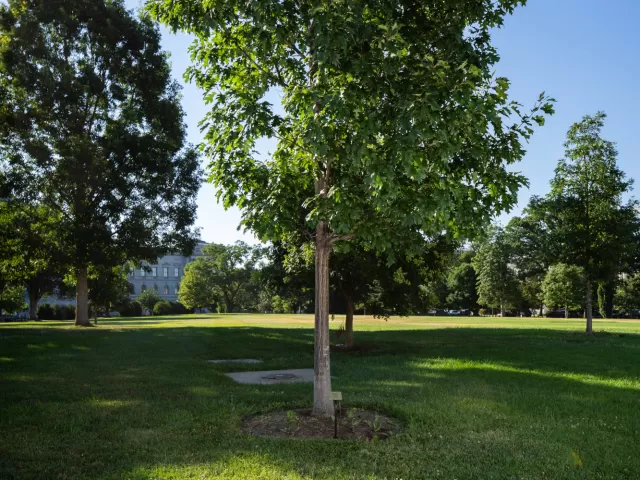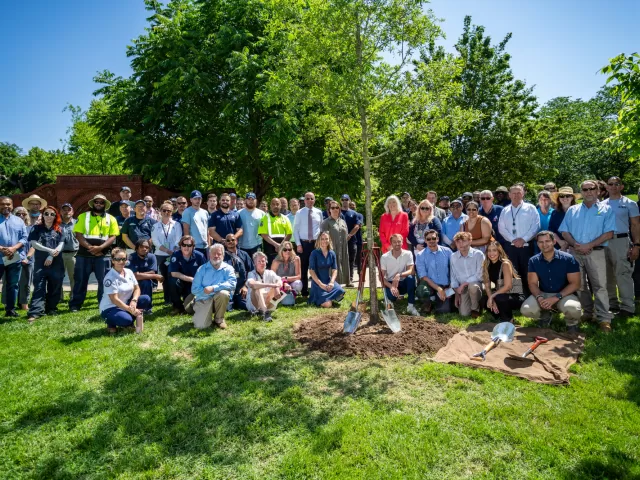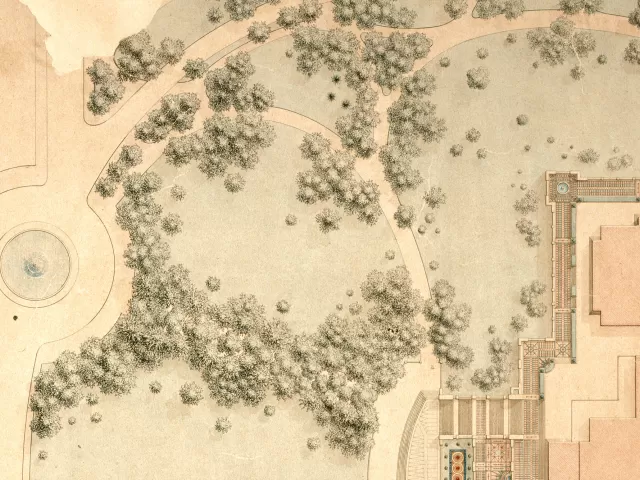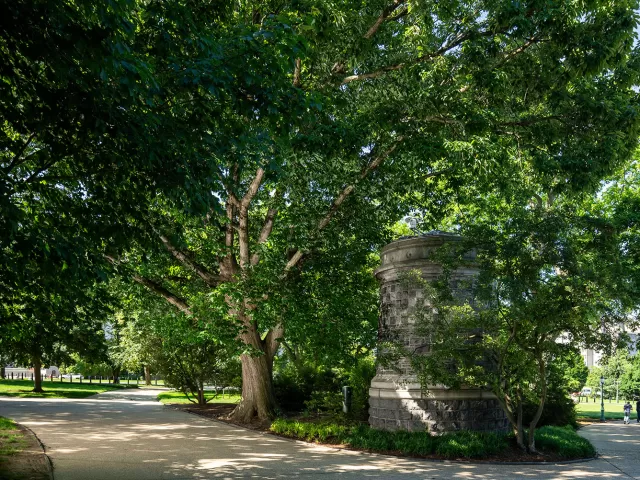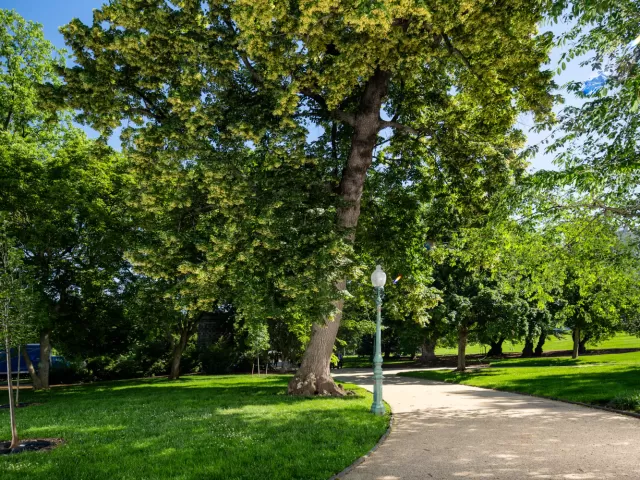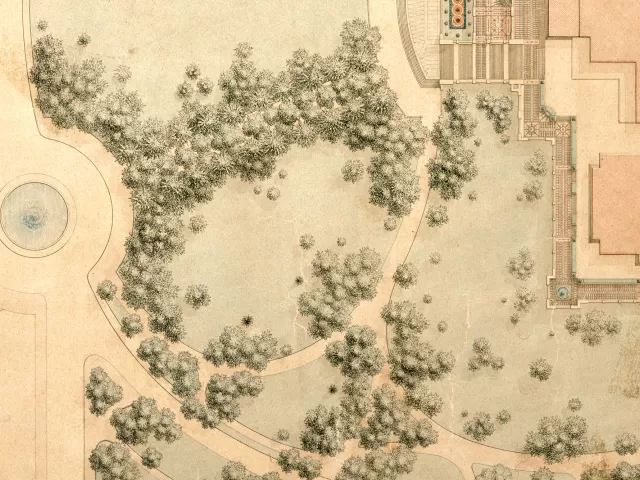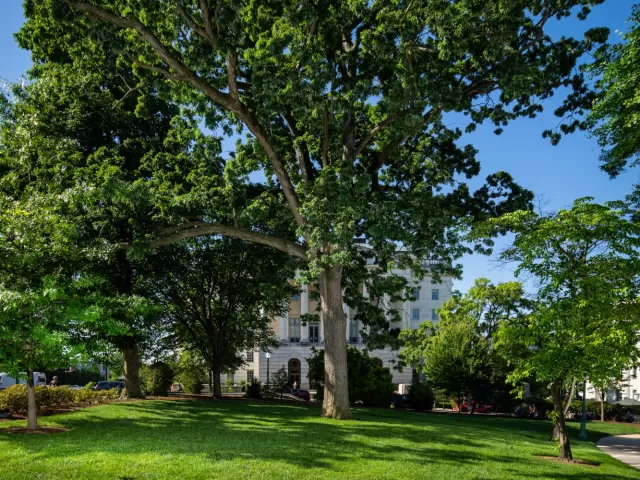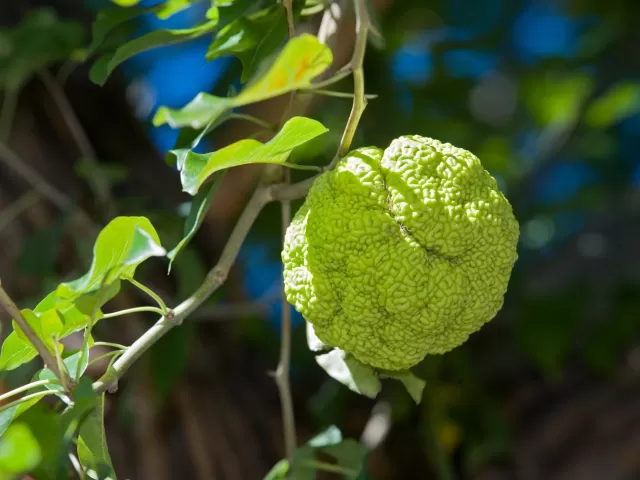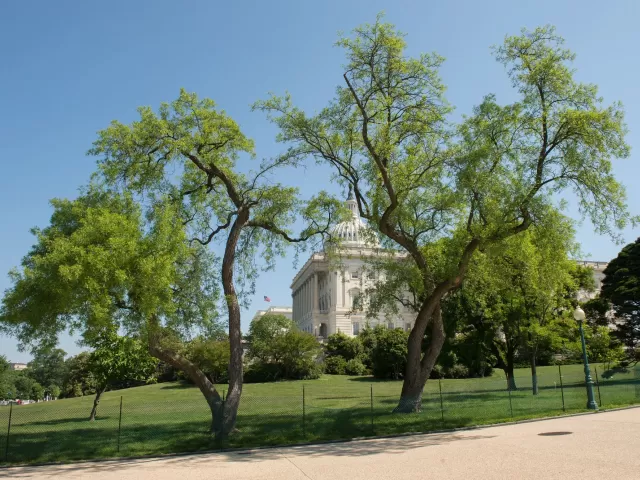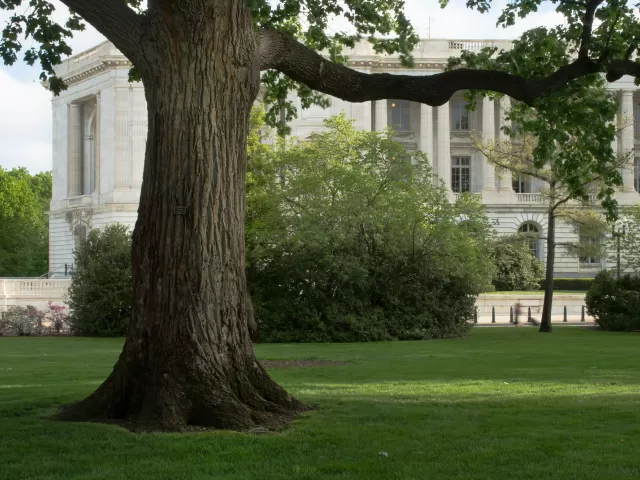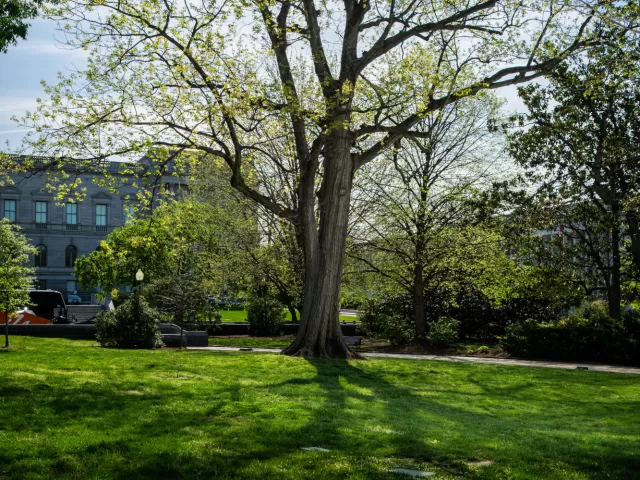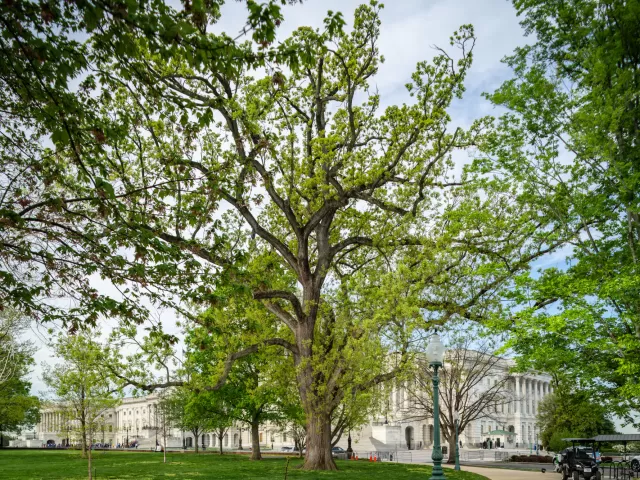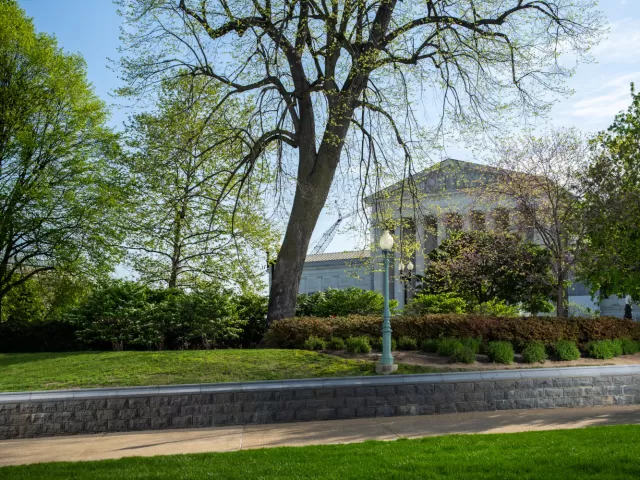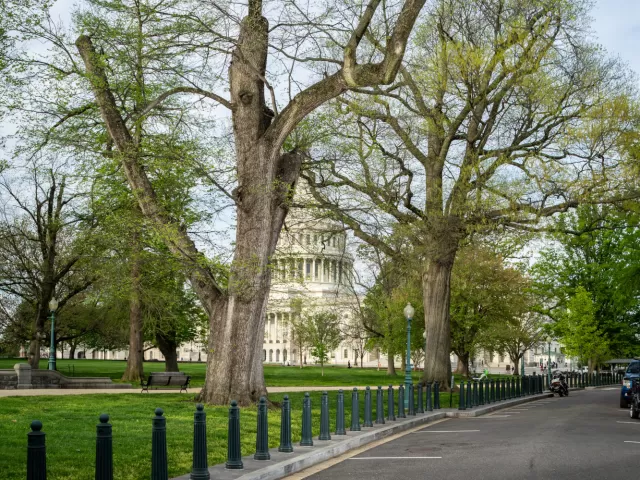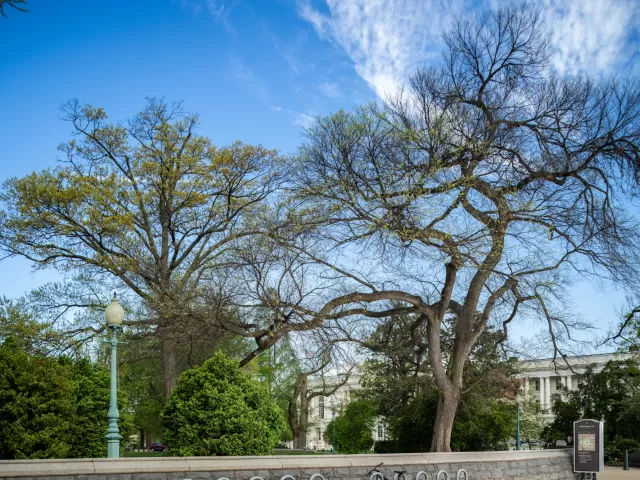Displaying 31 - 60 of 534 Clear
Highlight
The male figure of the Majesty of Law is portrayed as one who instills reverence for the law and typifies supreme authority and great dignity.
Highlight
A tree honoring the life and service of Bertie H. Bowman, longest-serving African American congressional staffer.
Basic page
The Architect of the Capitol summer internship program is for current students.
Basic page
Single stall restrooms are available to the public in the following locations.
Highlight
Sixteen columns in the small Senate rotunda of the U.S. Capitol feature tobacco capitals designed by Benjamin H. Latrobe, then modeled and carved by Francisco Iardella. A different tobacco motif designed by Thomas U. Walter is also used in the capitals of the 28 columns in the Hall of Columns .
Highlight
Modeled after the ancient Greek drinking horn with a mythical chimera with bended knees.
Highlight
This sweetgum was grown from the array of different seeds that flew nearly 270,000 miles from Earth and circled the moon aboard the Orion spacecraft.
Highlight
The bur oak has been recognized as the state tree of Iowa since 1961 and it stands as a timeless symbol of longevity, resilience, stability and strength. This tree, appropriately located on the Senate side of the U.S. Capitol Grounds, honors Senator Grassley's service in the U.S. Senate.
Highlight
U.S. Capitol Grounds memorial tree sponsored by Speaker Nancy Pelosi to honor Rep. John R. Lewis.
Highlight
A tree honoring the life and service of Mr. Christopher Vetick, Architect of the Capitol (AOC) former Deputy Director of Capitol Grounds and Arboretum.
Highlight
There is one original willow oak tree still living on the U.S. Capitol campus today.
Highlight
There is one original swamp chestnut oak tree still living on the U.S. Capitol campus today.
Highlight
There is one original bigleaf linden tree still living on the U.S. Capitol campus today.
Highlight
There is one original Kentucky coffeetree still living on the U.S. Capitol campus today.
Highlight
There is one original Wych elm tree still living on the U.S. Capitol campus today.
Highlight
There is one original cucumber magnolia tree still living on the U.S. Capitol campus today.
Highlight
There are two original white oak trees still living on the U.S. Capitol campus today.
Highlight
There is one original yellow buckeye tree still living on the U.S. Capitol campus today.
Highlight
There are two original Dutch elm trees still living on the U.S. Capitol campus today.
Highlight
There are two original white ash trees still living on the U.S. Capitol campus today.
Highlight
There is one original green ash tree still living on the U.S. Capitol campus today.
Highlight
There are three original Japanese pagoda trees still living on the U.S. Capitol campus today.
Highlight
There are two original Osage orange trees still living on the U.S. Capitol campus today.
Highlight
There are two original jujube trees still living on the U.S. Capitol campus today.
Highlight
There are three original tulip trees still living on the U.S. Capitol campus today.
Highlight
There is one original northern red oak tree still living on the U.S. Capitol campus today.
Highlight
There are three original bur oak trees still living on the U.S. Capitol campus today.
Highlight
Also known as basswood, the American linden is a native deciduous tree found throughout eastern North America. It is known for its broad, heart-shaped leaves, fragrant pale-yellow flowers that attract pollinators, and its smooth gray bark that develops ridges with age. Historically, its soft
Highlight
There is one original smoothleaf elm tree still living on the U.S. Capitol campus today.
Highlight
There are two original American elm trees still living on the U.S. Capitol campus today. About the Olmsted Originals Landscape architect Frederick Law Olmsted's 1874 General Plan for the U.S. Capitol Grounds sought to create a setting to accentuate the monumentality of the Capitol Building
